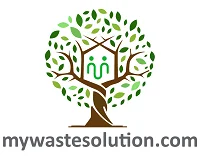Addressing the climate crisis is paramount to developing an enduring sustainable agricultural framework capable of meeting the world’s nutritional needs. Fluctuating climatic conditions and an increase in intense, disastrous weather events pose a formidable risk to global crop yields. At the same time, as the global population continues to rise, the demand for food follows. It’s becoming increasingly clear that conventional agricultural methods are no longer viable under these circumstances and are, in fact, aggravating environmental degradation, thereby fueling the very problem they are struggling to overcome.
So, how do we build sustainable food systems? The answer lies in ecological farming and the use of modern technology, including ones that rely on remote farm monitoring based on analysis of vegetation indices. But before we move on to explaining how using NDVI increases precision of field analysis, let’s get in detail on what we need to develop and support sustainability in food production.
Sustainable Food Systems: How to Build Them
Conventional agricultural methods have been found guilty in the deterioration of soil quality, contamination of water sources, decline in wildlife diversity, and escalation of greenhouse gas emissions. These practices, which involve destructive land management, excessive chemical use, and unsustainable water practices, are largely driven by the urgency to supply an ever-increasing population with food.
Moreover, climate change negatively affects both the living (biotic) elements and non-living (abiotic) components involved in farming. This results in the disruption of natural habitats and shifts in the relationships between crops and their pollinators. Additionally, the recent pandemic has further complicated matters by disrupting food supply chains and causing economic downturns.
Clearly, the necessity for a sustainable and robust approach to food production and distribution is vital. And the foundation of food systems lies in how we cultivate our crops, thus it is crucial to explore viable solutions in agricultural production.
Sustainable Crop Management
Sustainable crop management aims to harmonize economic, environmental, and social imperatives in agriculture. It’s a methodology that deeply intertwines with integrated crop management, a strategy that encapsulates soil health, biodiversity, judicious use of resources, and farmer participation to enhance agricultural productivity while safeguarding the environment.
Central to both is the use of advanced technologies like field monitoring with the help of vegetation indices, with Normalized Difference Vegetation Index (NDVI) being the most famous. NDVI values are calculated based on data collected with different sensors (ground devices, drones, satellites) and are usually integrated into a software where they are visualized on a digital map. Analyzing those values and how they change over time growers can track their plant’s growth and health through vegetation period.
In fact, NDVI mapping serves multiple roles in enhancing crop management. It guides farmers in optimizing water use and fertilizer application, leading to reduced environmental footprint and improved efficiency. More so, NDVI assists in early detection of pests and diseases, precise yield predictions, and determination of the optimal harvest time. This results in a more targeted approach to farming, where field activities are data-driven and resources are applied based on actual crop needs.
In essence, NDVI calculation leads to smarter, less wasteful, and more sustainable food production. And backing it up with other vegetation indices data, growers can get the full picture of what goes on on their field through the entire season.
Water Conservation and Quality
Conserving water in agricultural practices is another crucial task for combating water scarcity and ensuring food sustainability. By using efficient irrigation like drip systems, which deliver water straight to plant roots, and capturing rainwater or recycled water, farmers can cut down on waste and environmental harm, maintaining agricultural sustainability.
Drip irrigation is especially effective, reducing evaporation and runoff, and it can be customized to various crops and land conditions. Collecting water for later use ensures a dependable supply, especially during drought, helping to preserve freshwater.
Also, proper irrigation scheduling, based on crop needs and soil moisture, helps avoid overwatering, optimizes crop yields and water efficiency. Such data can also be collected and analyzed with the help of sensors and special software mentioned above.
Reducing Dependency on Synthetic Inputs
Reducing dependency on chemical fertilizers and pesticides is a cornerstone of sustainable food production. When applied without precision, such substances can lead to soil degradation, water contamination, and loss of biodiversity, negatively impacting both the health of ecosystems and the quality of food. By minimizing the use of synthetic inputs, farmers encourage natural soil fertility and pest control, which enhances the resilience of crops to diseases and climate variability. To do so, they can use sustainable practices like crop rotation, application of organic fertilizers, and integrated pest management. Furthermore, these methods can reduce farmers’ operational costs and protect consumers and farmworkers from potential health hazards associated with chemical exposure.
In summary, the significance of ecological agriculture cannot be overstressed when it comes to establishing sustainable food systems. Embracing ecological farming methods is necessary to not only satisfy today’s and tomorrow’s food demand but to preserve our planet for those who will inherit it.









